ARTICLE AD BOX

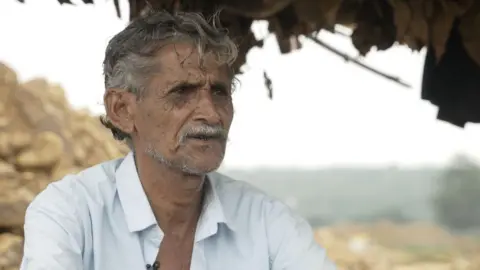 BBC Hindi
BBC Hindi
Prakash Sharma has been mining diamonds for 50 years
“I feel sick if I don’t search for diamonds. It’s like a drug.”
Prakash Sharma, 67, speaks about diamonds with a passion that has defined his life for the past five decades.
A diamond hunter in India’s central state of Madhya Pradesh, he spends most of his day in the mines of Panna district.
Panna is among the country’s most backward regions - its residents face poverty, water scarcity, and unemployment. But it's also home to most of India’s diamond reserves and remains a prime destination for diamond hunters.
While most mines are managed by the federal government, state officials lease out small parts of land to prospective miners every year at nominal prices. The district has the country’s only mechanised diamond mine.
However, once known for its large and rare finds, diamond mines of Panna are rundown now. Its reserves have depleted due to over-mining over the years.
Despite this decline, hopeful miners continue their quest.
They have to hand over their finds to the government diamond office, which evaluates the stones and sells them in an auction.
After deducting royalties and taxes, the proceeds are sent back to the miners, a bittersweet reward for their tireless digging.
Mr Sharma says he began digging for diamonds in 1974, right after he finished school, following in the footsteps of his father who was once a famous diamond hunter in his village.
He soon hit the jackpot after he found a six-carat diamond, which was worth a fortune 50 years ago.
That, he says, fuelled a passion in him to keep searching for more.
"I wanted to continue doing this instead of getting a low-paying government job," he says.

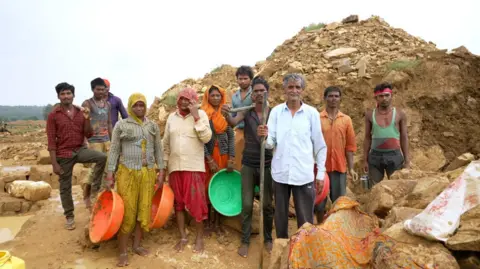 BBC Hindi
BBC Hindi
Diamond hunting is a family tradition passed down through generations in Panna
Mr Sharma is among thousands of men - young and old - who spend their days in the mines, hoping to strike rich and escape the cycle of poverty.
The miners start digging through gravel in the early hours of the morning. They then wash, dry and sift through it looking for diamonds until sunset. Their families help them in their work.
It's a physically demanding task - but for the people of Panna, it's an intrinsic part of their lives, conversations and hopes for a better future.
For many, diamond hunting is a family tradition passed down through generations.
Shyamlal Jatav, 58, comes from one such family. His grandfather started the work and now his son continues it, balancing his studies while working part-time in the mines.
Mr Jatav says his grandfather found many diamonds, but in those days, they did not sell for much.
But things are different now, with some of these stones selling for tens of millions of rupees.
Raja Gound is among the few who got lucky. A labourer by profession, he was neck-deep in debt when he found a massive 19.22-carat diamond in July.
He sold the diamond at a government auction for about 8m rupees ($95,178; £72,909).
Mr Gound said he had been leasing mines for more than 10 years in the hope of finding a diamond.

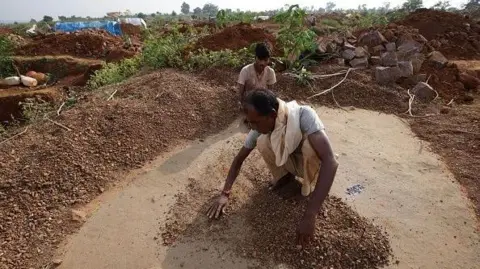 Getty Images
Getty Images
Miners spend more than 10 hours a day looking for diamonds in Panna's mines
India has always played a key role in the diamond industry. For more than 3,000 years, it was the world's sole diamond source.
This changed in the 18th Century with discoveries in Brazil and South Africa.
But Panna's legacy as a hub for diamonds has endured.
The district's Majhgawan mine, operated by the state-controlled National Mineral Development Corporation (NMDC), is the country’s only organised source of diamond production.
NMDC began mining in 1968 and by 2024, it had extracted over 1.3 million carats of diamonds.
Though anyone can mine diamonds in Panna - that too at a cheap price - most hunters avoid taking the official route to sell their treasure.
Several residents told BBC Hindi that there was a big market for illegally mined diamonds - but the exact figures of the trade are unknown.
A black-market dealer, who did not want to be named, said people sell their finds illegally to avoid taxes and to ensure quick payments.
“If they go through official channels, they only get paid after the diamond is sold at auction, which can sometimes take years,” he said.
Ravi Patel, Panna’s mining officer, says authorities have taken measures to curb illegal sales but it's difficult to track them because most of the diamonds mined are relatively small and do not fetch high prices.
Officials admit that there has been a decline in the number of diamonds deposited for government auctions.
In 2016, the office received 1,133 diamonds, but the numbers shrank to just 23 in 2023.
Anupam Singh, a government diamond evaluator in Panna, says restrictions on mining are behind this decline.
"The forest department has marked off significant zones, turning them into no-go areas for diamond hunters,” Mr Singh said.

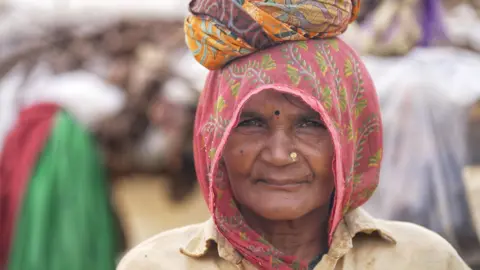 BBC Hindi
BBC Hindi
Women in Panna help their men mine for diamonds
There are more than 50 tigers living in the Panna Tiger Reserve and recent government efforts to preserve their population has presented many challenges to the miners.
Diamond miners who once operated within forested areas, including the buffer zone of the reserve, are prohibited from mining there and risk facing severe penalties if caught.
But despite the hardships and challenges, thousands of men continue to work in the shallow mines, hoping to overturn their fate.
Prakash Majumdar started digging for diamonds in 2020 after the Covid-19 lockdown took away all the labour and farming jobs in his hometown.
Desperate and struggling to feed his family, Mr Majumdar found his first diamond worth 2.9m rupees within a month of mining.
A lot has changed since - his family has now moved to a concrete home and he has become the elected village head.
Yet, his relentless quest for more continues.
“Diamond hunting will remain a part of my life and I am not going anywhere until I strike it rich,” he said.

 3 months ago
18
3 months ago
18
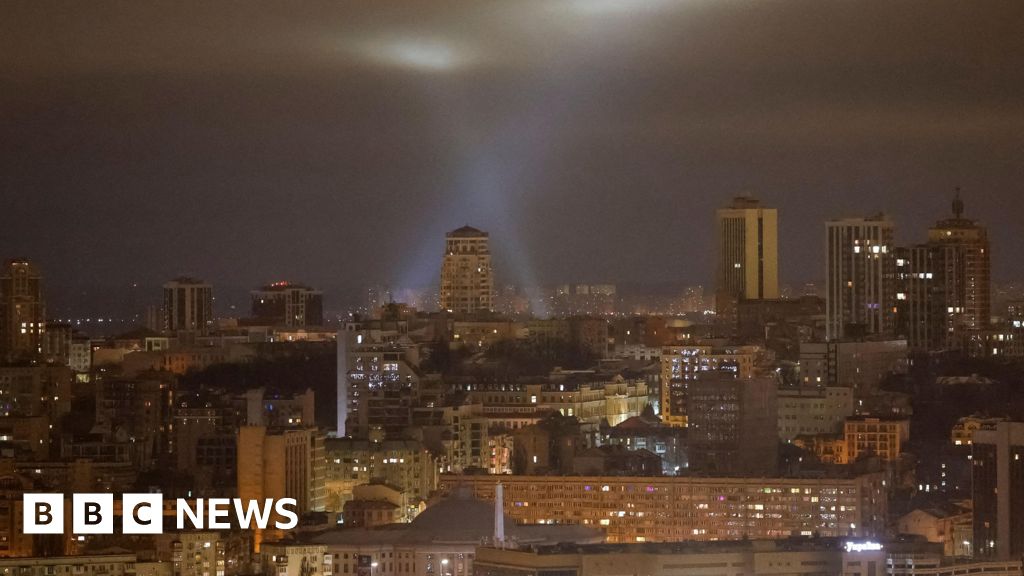
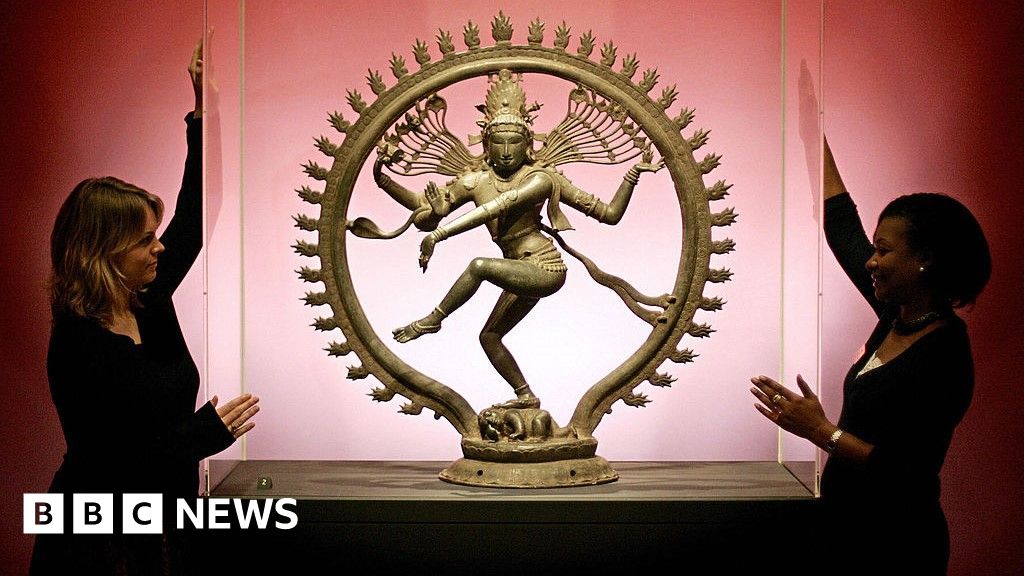






 English (US) ·
English (US) ·